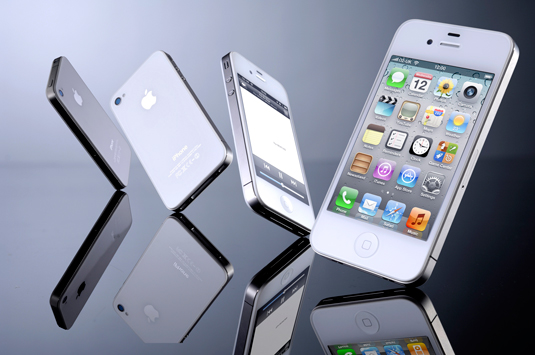Why mobile design means accessible design
Robin Christopherson explores why designing for mobile means designing for vision impairment or learning difficulties.

Computing on the go means accessing content and services in extreme environments. On a sunny day, trying to read small text on a small screen with poor colour contrast is an inconvenience and a frustration that the average busy mobile user won’t put up with.
Now consider this: those very same frustrations are faced not occasionally but all the time by people with vision impairment, dyslexia – or who have just misplaced their reading glasses.
Learning from mobile apps
When mobile internet access first came along, people were intrigued by the ability to pinch and zoom on a webpage to make the text large and then swipe around to see the whole page. Now people demand that websites appear simple and clear on a small screen without the need for a lot of scrolling: simplicity they're used to in their mobile apps.
Having a website that is simple enough to use for you to buy a gift for someone in two minutes while on the move will also be a gift for people with a learning difficulty or disability, who would otherwise struggle with complexity.
Temporarily able-bodied
The parallels are endless. Imagine you are driving and you can’t interact with your phone for any length of time. This makes you effectively temporarily physically and visually impaired.
The choices of voice command and speech output that many apps offer are things that users who are permanently physically or visually impaired also benefit from, or wholly rely upon as their main method of operation. Both groups experience the same benefits when these services work well – and experience the same frustrations when they do not.
In the US, the disabled community have a word for the able-bodied. They call them TABs (standing for 'Temporarily Able-Bodied'): an increasingly apt description, given an aging population, but also a phrase that has particular significance for mobile computing, as we have just seen.
Get the Creative Bloq Newsletter
Daily design news, reviews, how-tos and more, as picked by the editors.
Designing for shrinking screens
Over the next few years, screens are going to get smaller (Google Glass and smartwatches) and environments even more extreme as people are able to interact with their wearable technologies in situations where you wouldn’t even be able to take your phone out of your pocket.
There is no distinction between being temporarily or permanently disabled when it comes to mobile computing – and the sooner everyone realises that the better. Never forget: your older or disabled customers have real money to spend, and lots of choice where to spend it!
Words: Robin Christopherson
Robin Christopherson is a founding member and head of digital inclusion at AbilityNet. The organisation specialises in accessibility auditing and disabled user testing. This article originally appeared in net magazine issue 257.

Thank you for reading 5 articles this month* Join now for unlimited access
Enjoy your first month for just £1 / $1 / €1
*Read 5 free articles per month without a subscription

Join now for unlimited access
Try first month for just £1 / $1 / €1

The Creative Bloq team is made up of a group of art and design enthusiasts, and has changed and evolved since Creative Bloq began back in 2012. The current website team consists of eight full-time members of staff: Editor Georgia Coggan, Deputy Editor Rosie Hilder, Ecommerce Editor Beren Neale, Senior News Editor Daniel Piper, Editor, Digital Art and 3D Ian Dean, Tech Reviews Editor Erlingur Einarsson, Ecommerce Writer Beth Nicholls and Staff Writer Natalie Fear, as well as a roster of freelancers from around the world. The ImagineFX magazine team also pitch in, ensuring that content from leading digital art publication ImagineFX is represented on Creative Bloq.
